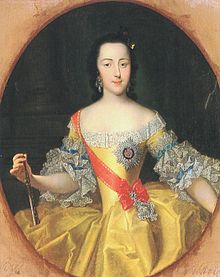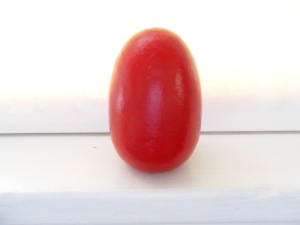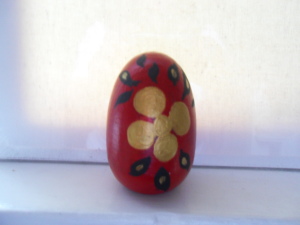
Catherine the Great
The word “teenager” didn’t exist in the eighteenth century but even if it did, it wouldn’t apply to Princess Sophie of Anhalt-Zerbst.
At the age of fourteen, Princess Sophie and her mother, and Princess Johanne Elizabeth of Holstein-Gottrop embarked on a trip to Russia. Princess Sophie hoped to marry the future czar* of Russia, the Grand Duke Peter, and eventually become the czarina of Russia. Even back then, most princesses were not likely to marry a czar! Clearly, she was not a typical “teenager.”
Princess Sophie was born May 2, 1729 in Stettin (now part of northwest Poland) which housed her father’s regiment. She was a minor princess, the daughter of Prince Christian August of Anhalt-Zerbst and Princess Johanne Elizabeth of Holstein-Gottrop. Her parents named her Sophie Augusta Fredericka.
From the age of six, a French governess, Babette Cardell, a Huguenot refugee, tutored Sophie and taught her reading, spelling, French and the manners of the French court. Additional tutors taught her dancing and other skills important for a young woman of her class. A minister taught her Lutheranism, her family’s faith.
When she was 7, Sophie became seriously ill probably with pneumonia. Her parents were not overly sensitive to her condition and took away her toys and dolls. There were no televisions, radios, i-pods, cell phones, etc. for her to use while she was bedridden. She wasn’t a typical child, either. Sophie was intelligent, adventurous and very imaginative which she used while she was an invalid.
When she finally felt better, her parents discovered that her upper body and spine had become misshapen. This was due to a deficiency in Vitamin D, an ailment that also affected her younger brother, Frederick Auguste. The local bone setter fashioned the brace which she wore for almost four years. Her ordeal taught her patience and fortitude and gave her the will to fight to survive, skills that she would later put to good use.
In 1736, Sophie visited the German state of Brunswick-Wolfenbuttel with her mother. Princess Johanna Elizabeth had grown up there, raised by the Grand Duchess who was also her godmother and aunt. Court life fascinated Sophie and was happy to watch members of royal and aristocratic families at balls and other events with a chaperone. Her experiences at court taught her about the world outside of Stettin.
Like so many girls of her class, Sophie movements were carefully supervised. She was not allowed to hang out or go to the theatre with her friends or kick a soccer ball around in the park.
Johanna Elizabeth’s family was the ruling family of Holstein-Gottorp and their relatives were the imperial family of Russia. In 1727, Duke Karl-Frederick of Holstein-Gottorp married Anna Petrovna, the daughter of Czar Peter I known as Peter the Great. A year later, Anna gave birth to a son, Karl Peter Ulrich.
When Peter the Great of Russia died in 1725 without an heir, his second daughter, Elizabeth Petrovna, took over as ruler. Empress Elizabeth had no children of her own so in 1742, she chose her nephew, Karl Peter Ulrich, Duke of Holstein-Gottorp, to become czar upon her death. Elizabeth had a secondary motive: she didn’t want Karl Peter to inherit the throne of Sweden, Russia’s enemy. Karl Peter had a good claim to Sweden’s throne because his paternal great-uncle was Sweden’s King Charles XII.
In 1743, Karl Peter became the Grand Duke, heir to the imperial throne of Russia. He unwillingly converted to the Russian Orthodox faith and was given a new name, Peter.
Today, most people are free to choose who they want to marry but it was different for members of royalty in the eighteenth century. The expectation for young women of Sophie’s class was to marry as a way of forming political and economic alliances between royal families. Sophie’s mother lobbied to arrange a marriage between her daughter and Peter. So did the mothers of other princesses.
As a way for Empress Elizabeth to see the list of candidates for Peter’s wife, eager young princesses had their portraits painted and sent to Russia for her review. Sophie had her portrait painted by an artist chosen by the empress.
Months later, Elizabeth sent emissaries to look Sophie over and requested a second portrait. They interviewed her and her mother. More time passed but Sophie received the letter she was waiting for: a request for an interview with Empress Elizabeth of Russia.
Elizabeth selected Sophie as a candidate for Peter’s future wife especially because of her Holstein-Gottorp ancestry. But Elizabeth wanted Sophie and her parents to meet with King Frederick of Prussia first. Sophie passed the King’s test. Sophie said goodbye to her father who returned to Stettin making his daughter promise to never abandon her Lutheran faith. She never saw her father again.
In 1744, Sophie and her mother set off for Russia. It was the middle of winter. No fourteen-year-old would have enjoyed or easily endured the trip but Sophie’s goal was to reach Russia and be chosen as Peter’s future wife.
The hard uncomfortable journey took almost a month before they reached Riga, a Russian city on the Baltic Sea. The empress’ representative met them there and gave them a sledge to continue their journey. The sledge was warm and comfortable with furs, a bed and an escort. Along the road they traveled, crowds lined the streets to see their carriage go by. They stopped first in Moscow then continued to St. Petersburg. Johanna’s goal was to arrive there on or before Feb. 10th which was Peter’s birthday and help him celebrate it.
They arrived in St. Petersburg on February 7, 1744, royal court greeted them warmly. Sophie met the empress and became acquainted again with Peter who she met years earlier on one of her visits to the German court. He was immature and obsessed with his toy soldiers then. Childlike and sickly when Sophie and Peter first met, Peter still loved his toys and playing soldier. He was a disappointment to the empress but Sophie humored him. Her future lay with becoming Peter’s wife.
She and her mother attended balls and banquets and the empress lavished Sophie with expensive gifts. But Sophie wasn’t interested in the frivolities of her age group. She learned Russian, the dances of the Russian court and the tenets of the Russian Orthodox Church. She endeared herself to the empress who wanted a strong person to become Peter’s wife.
She contracted pleurisy during this period but neither the illness nor her mother’s efforts at spying on the court for King Frederick of Prussia lessened her chances to become Peter’s wife. Her time spent at Brunswick-Wolfenbuttel taught her about royal intrigues and her new experiences at Elizabeth’s court confirmed what she already knew.
Sophie converted to the Russia Orthodox faith on June 28, 1733. Her new name was Ekaterina Alexeyevna or Catherine Alexandra. The next day, she became officially engaged to the Grand Duke Peter Ulrich. Her efforts to become Russian had paid off for the minor princess from Anhalt-Zerbst.
Catherine and Peter’s wedding took place on August 21, 1745 at the Church of the Virgin of Kazan in St. Petersburg and she became the Grand Duchess Catherine Alexeyevna.
She was only 17 years old.
*Czar means emperor or king; a derivative of the Roman Caesar; also tsar or tzar
To read more about Catherine the Great:
Gregory, Kristiana. The Princess Diaries, Catherine the Great, Journey. NY: Scholastic, 2005
Hatt, Christine. Catherine the Great. Milwaukee: World Almanac Library, 2004.
Rounding, Virginia. Catherine the Great, Love, Sex, and Power. New York: St. Martin’s Press, 2006.
_________ Catherine the Great. Virginia: PBS Home Video, 2006.
Vincent, Zu. A Wicked History, Catherine the Great, Empress of Russia. NY: Scholastic, 2009
Whitelaw, Nancy. Catherine the Great and the Enlightenment in Russia. Greensboro, NC: Morgan Reynolds, 2005
KHOKLOMA

Khokhloma – background color

Khokhloma – gold and black on red background
Khokhloma, a traditional Russian folk craft, is a form of wood painting utilizing floral and fruit patterns and red, gold and black colors. Below is a simple version for you to make at home. For more information on khokhloma visit: http://allnewsvideos.com/2014/09/14/khokhloma-painting/
Materials:
Wooden object such as an egg or ball
red craft paint
black craft paint
gold craft paint
brown or white craft paint for priming the wood
Acrylic paint brushes
container for water
clean cloth
pencil/eraser
varnish (optional)
1. Wipe the surface of the wood with a clean cloth.
2. Determine your design. Use your imagination and create your own floral or fruit designs instead of tracing a pattern. If necessary, use stencils. Sketch it on a piece of drawing paper first and then on the wood with a pencil. Place the design on both sides of the egg or ball.
3. Prime the wood with brown or white paint using a broad brush. The under paint will determine the darkness or lightness of the painted background and designs. Carefully paint around your design. You will need a narrower brush to paint around the design.
4. Paint the background gold or red. You will probably need two coats of paint. Let each coat dry thoroughly before applying the next coat.
5. Paint the design with a narrow brush using red and black on the gold background or gold and black on the red background. Apply two coats if necessary.
6. Wen the paint is dry, apply varnish to give the surface a shiny coat. Allow the varnish to dry and display the khokhloma.
Like this:
Like Loading...









